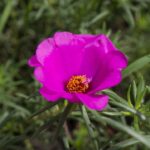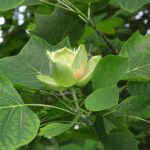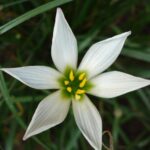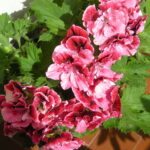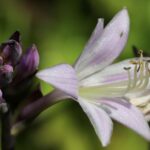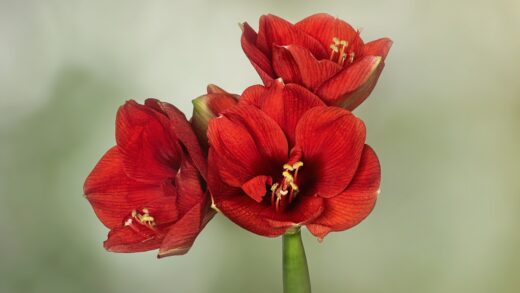Wintering of the Hosta

As the vibrant colors of the growing season fade, preparing your Hostas for their winter dormancy is a crucial final step in their annual care cycle. Although Hostas are exceptionally hardy perennials, capable of surviving cold temperatures in many climates, a few key practices in the autumn will help ensure they endure the winter unscathed and emerge with renewed vigor in the spring. Proper winter preparation, or wintering, primarily involves garden sanitation, protecting the crown from harsh winter elements, and providing special care for container-grown specimens. By understanding and implementing these straightforward techniques, you can safeguard your plants and set the stage for another spectacular display of foliage the following year. This guide outlines the essential steps for successfully wintering your Hosta plants.
The wintering process for Hostas begins in the autumn as the plant’s metabolism naturally slows in response to shorter days and cooler temperatures. You will observe the leaves gradually lose their color, turning from green or variegated shades to a uniform yellow or tan before collapsing. This is a vital period of senescence during which the plant is actively reallocating energy and nutrients from the dying leaves and storing them in the crown and root system. This stored energy is the fuel the plant will use to survive the winter and produce its initial burst of growth the following spring. It is therefore essential to allow the foliage to die back completely and naturally before you begin any garden cleanup.
Once the foliage has completely withered and turned brown or mushy, typically after the first couple of hard frosts, it is time for the autumn cleanup. Using pruning shears or scissors, cut back all the dead foliage to the ground level, about one to two inches from the soil surface. This step is arguably the most important part of wintering Hostas for several reasons. Firstly, it removes the decaying plant material that can serve as a primary overwintering site for slugs and snails, as well as their eggs. Secondly, it eliminates any fungal spores, such as those that cause anthracnose, that might be present on the old leaves, thus reducing the likelihood of disease problems in the following season.
After clearing away all the dead leaves and any other garden debris from around the base of the plant, you have created a clean slate for the winter. This act of sanitation is a form of preventative pest and disease control, significantly improving the health of your garden in the long term. Be sure to dispose of the removed foliage, especially if you have had any disease issues during the season; it is best to bag it or burn it rather than adding it to your compost pile, where pathogens and slug eggs could potentially survive. A clean garden bed heading into winter is the first sign of a healthy garden to come in the spring.
The final step for in-ground Hostas is to apply a protective layer of mulch. This is particularly important for newly planted Hostas, tender cultivars, or for gardeners in regions with very cold winters and little reliable snow cover. The primary purpose of winter mulch is not to keep the ground warm, but rather to insulate it and keep it frozen, preventing the damaging freeze-thaw cycles that can heave plants out of the ground. After the ground has frozen, apply a two to four-inch layer of a light, airy mulch like shredded leaves, pine straw, or chopped-up cornstalks over the crown of the plant. This will provide the necessary protection without becoming overly wet and compacted, which could lead to crown rot.
More articles on this topic
The importance of fall cleanup
The practice of fall cleanup in the Hosta bed is a cornerstone of responsible garden hygiene and plays a pivotal role in the long-term health of the plants. While it may be tempting to leave the withered foliage in place over the winter, doing so creates a perfect habitat for a host of problems that can plague your plants the following year. Decaying Hosta leaves form a damp, sheltered mat on the soil surface, which is an ideal environment for slugs and snails to hide from the cold and lay their clusters of eggs. Removing this debris significantly reduces the slug population that will emerge in the spring, hungry for the tender new Hosta shoots.
Beyond slug control, removing the dead foliage is a critical measure for disease prevention. Fungal pathogens that may have infected the leaves during the growing season, such as those causing anthracnose, leaf spot, or petiole rot, produce spores that can easily survive the winter on the dead plant material. Leaving this infected debris in place ensures that a ready source of inoculum is present to re-infect the new growth as soon as it emerges in the spring. By cutting back and properly disposing of the old leaves, you effectively break this disease cycle and greatly reduce the need for fungicides or other interventions during the next season.
A clean garden bed also discourages rodents like voles and mice from taking up residence. The thick layer of collapsed Hosta leaves can provide cover and nesting material for these pests, which may then proceed to tunnel underground and feed on the Hosta crowns and roots throughout the winter. Removing their protective cover makes the area less attractive to them and makes them more visible to natural predators like hawks and owls. This simple act of tidiness can therefore help to protect the very heart of your Hosta plants from being damaged or destroyed during their dormant period.
Furthermore, a thorough fall cleanup prepares the garden for spring and makes the emergence of the new growth a much more visually appealing event. Without a mat of old, decaying leaves, the vibrant purple and green shoots can poke through the soil into the clean, open air. It also makes it much easier to apply an early spring application of compost or fertilizer directly to the soil where it is needed. In essence, the work you do in the fall directly translates to a healthier, more beautiful, and less problematic garden when the growing season resumes.
More articles on this topic
Mulching for winter protection
Applying a layer of winter mulch is a key strategy for protecting your Hostas from the stresses of winter, particularly in colder climates. It is important to understand that the goal of winter mulching is different from that of summer mulching. While summer mulch is used to conserve moisture and keep the soil cool, winter mulch is applied to insulate the soil and protect the plant’s crown from extreme temperature fluctuations. The most damaging condition for many dormant perennials is not the sustained cold, but the repeated freezing and thawing of the soil, which can heave the crown and shallow roots right out of the ground, exposing them to desiccating winds and cold.
The timing of the mulch application is critical to its effectiveness. You should wait until after the ground has frozen for the first time, or at least until after several hard frosts have ensured the plant is fully dormant. Applying mulch too early, while the ground is still warm, can trap heat and moisture around the crown, potentially leading to rot. It can also provide a cozy winter home for voles and other rodents, encouraging them to nest right on top of your Hosta crowns. By waiting for the ground to freeze, you ensure the plant is dormant and the rodents have likely found shelter elsewhere.
The type of material you choose for winter mulch is also very important. The ideal winter mulch is something light, airy, and non-matting, which will trap air and provide insulation without becoming a heavy, waterlogged mass. Excellent choices include shredded autumn leaves (oak leaves are particularly good as they don’t break down as quickly), pine straw, or even evergreen boughs. Materials to avoid include heavy, wet substances like whole leaves that can mat down, or thick layers of compost applied too close to the crown, which can promote rot over the winter.
When spring arrives, it is equally important to know when to remove the winter mulch. As the ground begins to thaw and temperatures start to rise, you should gradually pull the mulch away from the crown of the plant. This allows the soil to warm up and allows the emerging Hosta shoots to receive sunlight. Leaving the winter mulch in place for too long can delay the plant’s emergence and can smother the new growth. The old mulch can then be spread out in the garden paths or incorporated into your compost pile.
Winter care for container-grown Hostas
Hostas grown in containers require a different and more deliberate approach to winter care than their counterparts planted in the garden. The soil in the garden acts as a massive insulator, protecting the plant’s roots from the most extreme fluctuations in air temperature. In a pot, however, the roots are exposed to the cold from all sides, and the soil can freeze solid much more quickly and deeply. This can be fatal to the plant, even for a cold-hardy perennial like a Hosta. Therefore, the primary goal of wintering container Hostas is to protect their root systems from these harsh freezing conditions.
One of the most effective methods for protecting potted Hostas is to move them to a sheltered location for the winter. An unheated garage, a cold basement, or a garden shed are all excellent options. These locations will keep the pot out of the freezing wind and precipitation, and the ambient temperature will remain cold enough to keep the Hosta dormant but will not drop to the extreme lows experienced outside. Before moving the pots, allow the foliage to die back naturally and cut it back, just as you would for garden-planted Hostas. The soil in the pot should be lightly moist, but not soaking wet, before it goes into storage.
If you do not have a suitable indoor storage space, you can still protect your potted Hostas outdoors. One technique is to group all your pots together in a sheltered location, such as against the foundation of your house, preferably on a side protected from the worst of the winter winds. Huddling the pots together reduces the surface area of each pot that is exposed to the cold. You can then pile insulating materials like shredded leaves or straw bales around and over the entire group of pots. Covering the arrangement with a breathable material like burlap can provide additional protection.
Another outdoor method, particularly effective for gardeners with in-ground space, is the “pot-in-pot” or “heeling-in” technique. This involves digging a hole in an empty garden bed that is large enough to sink the entire Hosta pot into the ground, up to its rim. The surrounding garden soil will then provide the necessary insulation for the roots, just as it would for a regularly planted Hosta. After placing the pot in the hole, backfill with soil and cover the top with a layer of winter mulch. In the spring, you can simply lift the pot out of the ground, clean it up, and move it back to its summer location on your patio or deck.





